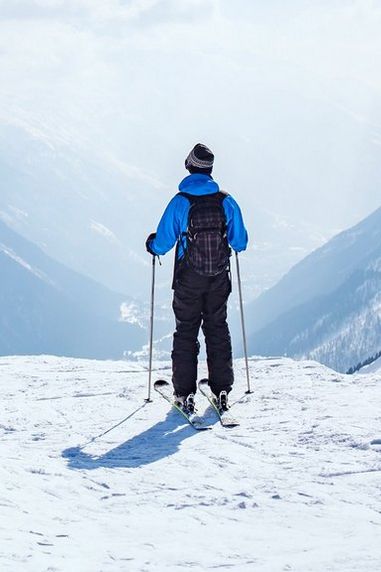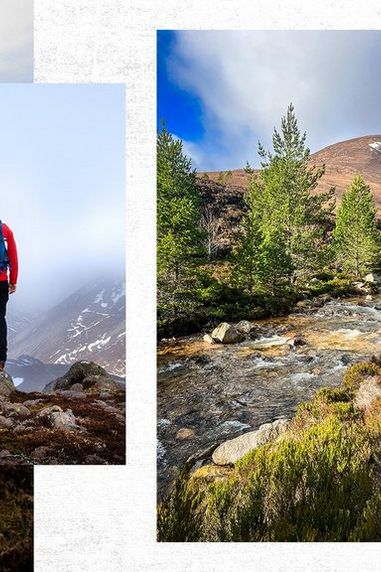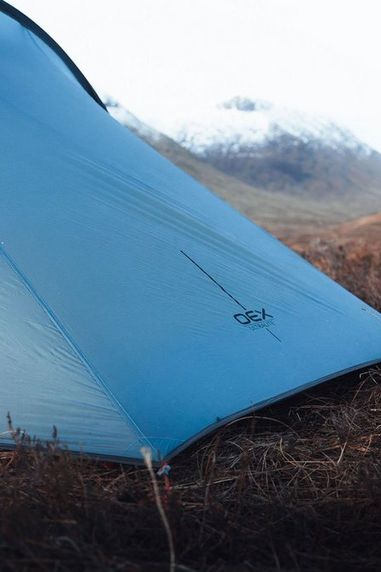
The Backpacking Gourmet Cooking kit

What could be better than enjoying a home cooked feast prepared from foraged ingredients surrounded by stunning scenery?
Inspired by Paul Robinson, the Yorkshire Gourmet, and with the help of our friends at Coleman, we've compiled a selection of lightweight cooking gear that's perfect for preparing tasty food in the Great Outdoors. This easy to carry cooking gear won't slow you down or restrict your culinary ambitions.
Lightweight camping stove
You'll need a small, lightweight stove that delivers plenty of heat without taking up too much room in your pack. The Coleman FyreLite Stove is one of the lightest burners available on the market. It weighs just 77g and has a 3600W output, which is suitable for boiling water and heating foods through. For quicker boil times and a searing-hot pan, the Coleman FyrePower Stove is a top choice. It delivers 7000W of cooking power and weighs just 153 grams. Both screw into the top of the canister and are supported by the cannister beneath.
The main requirements of a stove are:
- Portability - so don't go over the top!
- Enough power output to cook and boil quickly.
- Valve controlled gas flow - essential for adjusting the heat.
- A stable design and pan supports that hold a pan and ingredients.
- Wind protection is usefule for unsheltered cooking.
Compact gas cartridge
A gas cartridge will screw directly onto your mini stove. There are different volumes to choose from, but for minimum space and weight select the smallest size possible, like the Coleman C100 Gas. It's designed to work in extreme temperatures as low as -27 °C (in case your culinary skill take you to the Poles or Everest) and will deliver an average burn time of approximately 40-50 minutes, which is plenty. Larger C300 and C500 cannisters will still fit easily into a backpack and provide much more cooking time.
Fire Striker/lighter/matches
Most gas stoves include built-in piezo ignition, but it's always a good idea to have a backup ignition option. A fire striker like this one from Lifesystems is the most reliable in all weather and is extremely compact, but matches or a lighter will work too.
We're packing light, so leave the Le Creuset cast iron skillet at home.
Any cook worth their salt will tell you that a good pan distributes heat efficiently and evenly across the cooking surface. A conductive material, such as alumnium, and enough material at the base of the pan are the key. Traditional backpacking pans are designed to be lightweight and easy to stow away, they are designed for warming foods, not for cooking. Look for something a bit more substantial and save space with a removable or foldable handle.
Non-stick coating, known by it's Dupont brand name Teflon™ or its chemical compound name, PTFE (polytetrafluoroethylene), prevents food from sticking and burning in a pan. It's perfectly possible to cook in a pan without a non-stick coating, but it requires more oil/fat and more vigorous washing up.
There are plenty of specialist camping pans available. The Trangia range is lightweight, stowable and designed to fit the same removable handle which can be stashed inside the pot to save space during transport. The system is modular and includes strainers, collinders and other useful cookwear.
Increasingly, new and existing brands are catering to outdoor cooks with high quality, lightweight pans that wouldn't look out of place in The Fat Duck.
Knife & chopping board
While carrying a Chef's knife might be overkill, a sharp and blade that cuts through ingredients easily is important for enjoyment and safety.
However, carrying a knife in the UK has legal ramifications. Legally, you are permitted to carry a knife in public if it has a folding blade that is no longer than 3 inches (7.62cm) in length, like the classic Victorinox Swiss Army Knife. This does not include lock knives, or fixed "hunting" or "bushcraft" knives which are illegal to carry in public.
There is a caveat to the law. If you can justify carrying a knife, i.e. you can prove that the knife is for preparing food in the outdoors, you should be fine. The general consensus is that in order to justify possession of a knife for outdoor cooking, the knife should be fit for purpose, accompanied by other cooking equipment, stored in a bag instead of on your person, and not a banned variety (UK government list of banned knife types).
In addition to the knife, a small wood or bamboo chopping board will provide an even and sterile surface to prepare food on. Plastic chopping boards also work fine. A number of brands offer a chef's knife and chopping board kit – folded, the chopping board is a secure carry case for the knife.
Utensils
Plan the right utensils for the meal you're making, such as a spoon or a spatula. If you want to go super basic, you can often get away with using a spork as your utensil and cutlery. But for more complex meals like these incredible camping stove dishes from The Yorkshire Gourmet, we recommend picking up a lightweight tool kit that comes with everything you need for cooking and washing up like this one from Sea to Summit.
If your pan is non-stick, remember to pack wooden or plastic utensils that won't damage the coating.
Crockery and cutlery
If it's a meal for one, eat straight from the pan and save on washing up. If you don't want to eat directly from the pan, or you are hosting guests, plastic plates and bowls are much lighter than ceramic crockery.
A spork is the most compact cutlery option for saving space and is a firm favourite among experienced backpackers. There is also a wide selection of lightweight camping cutlery available, some with protective cases to prevent any damage to your kit while you hike. Or go wild and use your fingers.
Whose turn is to wash up?
Decant biodegradable washing-up liquid into a small container and pack a small scouring sponge for cleaning your pan and dishes. It's not necessarily a good idea to leave food waste lying about, so pack a biodegradable green waste bag for your leftovers. If you don't fancy washing your cookwear and dishes (speaking franky, who does?!), wrap them in a plastic bag and pop them in your bag until later. Just don't forget to dig them out when you get home or you might get more than you bargained for.
Water, Oil and Seasoning – don't forget!
You'll need water for drinking and cooking, but don't forget to bring some extra clean water to wash your dishes. If you aren't planning to use the kit again, you can use water from an open source like a stream or river to remove leftover food before giving your pans and bowls a proper clean with washing-up liquid when you get home.
Lastly, you'll need oil to fry foods and salt and pepper to season it. If you want to get really fancy, bring some herbs and spices along too… afterall if you can carry it, why not?
The Car Boot & Campsite Gourmet Cooking kit

If cooking at a basecamp, campsite or car park, is more appealing than carrying your kitchen on your back, this is section is for you. With less importance placed on weight and compactness, it's much easier to sauté, poach and braise your forest finds with a campsite cooking setup. And, while kitsch enamel crockery and smart lightweight cookwear might boost the vibes, it's not as essential.
Camping stove/grill
Since you won't be lugging your stove with you, there's no downside to sizing up. Double burner stoves and party grills from Campingaz are incredibly popular with campers thanks to their foldable design and versatility, helping you cook different elements of a dish at the same time.
Depending on how much cooking you'll be doing, larger canisters like Coleman's C500 Performance Gas should provide plenty of cooking time or consider purchasing a Twin Connection Regulator by Campingaz which allows smaller cannisters (CV470 Plus cartridge) and larger R907 & R904 cylinders to be used.
If there's a Jerry Can of unleaded in your boot – why not try a liquid fuel powered stove like the Coleman Sportster, which also runs on Coleman's specially formulated liquid fuel.
Keep it cool
Keep your ingredients fresh and wine chilled with a cooler. The 30QT Performance Cooler from Coleman has great insulation for long-lasting cooling performance and doubles up as both a seat and a side table with cup holders built-in. Coolboxes are much more effective when voids are filled with ice packs or ice cubes, which help to keep the internal temperature low for longer.
Dine al-fresco in style
Enjoy a wonderful lunch in a shaded spot with beloved familed, good friends and comfortable furniture! Add foldable camping chairs and a fold-up camping table to your setup to take your dining experience to the next level. Most camping tables have lightweight aluminium frames and fold flat to take up very little room in the car boot.
Citronella candle
Keep the bugs away. Citronella candles emit a pleasant aroma that naturally repels flying insects so you can enjoy your meal in peace.
How to cook outdoors safely and responsibly

Store foods safely: avoid cross-contamination and use a cooler for fresh ingredients that might spoil such as uncooked meat and dairy.
Never cook inside a tent: Cook in an open, well-ventilated area at least a few feet away from your tent.
Set up your stove on a flat, even surface: Make sure the stove and gas are stable and there is no long grass or plants that could catch the flame.
Check the gas is connected properly: Ensure the gas is screwed onto the thread of the stove properly.
Cook with a controlled flame: Make sure the flame doesn't pass the edge of the bottom of your pan. Use a windshield in strong winds to keep the flame steady and improve the performance and efficiency of your stove and gas.
Don't leave a lit stove unattended: Keep an eye on your stove to prevent overcooking and safety risks.
Wait for the stove to cool before handling it: This will prevent burns. It's a good idea to take a first aid kit with you on all outdoor pursuits in case of injury.
Leave no trace: Leave the area you cooked in the same or better condition than you found it, taking away all waste and any litter you spot from previous visitors. When washing up, don't dispose of greywater near any lakes, rivers or streams as this can cause contamination.
Don't overcook your pasta: Most importantly, only cook past until it is al-dente (slightly firm when bitten) like the Italians do.
Camping stove meal inspiration

Check out these terrific camping stove recipes from two of the best outdoor cooks in the UK, Paul Robinson (The Yorkshire Gourmet) and Harrison Ward (Fell Foodie).
- Stewed wild apples with honey and granola
- Cheese toasties with macerated wild berries
- Mushroom and thyme risotto
- Pesto eggs with avocado and goat's cheese toast
- Chorizo and cannellini bean stew
- BBQ 'Sloppy Joes'




